Fiber Optic Cable Innovations in the Age of IoT



Introduction Segments of IoT That Incorporate Fiber Optic Technology 01 03 02 04 State of Fiber Optic Market and Corresponding Markets History of Fiber Optic Cables Innovations in Industry 4 0 and IoT Supported By Fiber Optic Networks Innovations and Developments That Address Fiber Optic Networks Challenges 05 07 06 08 Challenges Facing Fiber Optic Network Industry Conclusion References 09 Network Access Innovations Fiber Design Innovations Light Source and Detector Innovations Network Efficiency and Capacity Innovations Monitoring and Sensing Innovations 1 2 3 4 5
Table Of Content:
Introduction
In a broad sense, IoT or the Internet of Things refers to a system where everyday objects are connected to the Internet and can gather and exchange data without requiring human-to-human or human-to-computer interaction IoT includes consumer, commercial, industrial, and infrastructural segments.
In IoT and Industry 4 0, fiber optic networks are the backbone of the infrastructure as they are the primary technology that facilitates automation. Fiber optic technologies bring extra-fast data sharing to automation. Industrial automation systems require robust networks capable of withstanding harsh conditions. This is when traditional copper conductors fall short, and fiber-optic circuits prove to be more reliable
Fiber optic technology has the most potential to be a future-proof technology that responds well to new inventions in technology and industry Soon it will fully replace other communication cables in industries and large-scale projects. The whitepaper aims to overview and categorize existing and developing fiber optic cable innovations and how they serve the Internet of Things by solving common challenges with connectivity infrastructure.

01
State of Fiber Optic Market and Corresponding Markets
The value of the fiber optics market was estimated to grow at USD 8.76 billion in 2022 and is expected to grow at a CAGR of 6.9% from 2023 to 2030

Fiber optics market is driven by factors like the increase of telecom infrastructure in developing economies and the use of fiber optic cables in new areas, such as medicine. However, one of the most prominent areas where fiber optic technology has the potential to grow is through IoT and industry 4.0.
Related to Industry 4 0 is the temperature sensor market, which encompasses thermocouples, RTDS, thermistors, temperature sensor ICS, infrared, and fiber optic temperature sensors The market, anticipated to reach USD 8.0 billion by 2028, heavily relies on fiber optic technology.
The global IoT market is valued at 544.8 billion in 2022 Its projected pace of growth by 2030 is at a CAGP of 26,1%. In 2030, the market is expected to reach 3352.97 billion. The key driving factors of the market are Industry 4 0, smart manufacturing, smart homes, and smart infrastructure. What hinders the growth are the limitations related to security and integrity of cables Innovations in fiber optic networks will address these limitations to an extent
02
Meanwhile, the global data demand is surging at 26% CAGR, according to the Cisco VNI Global IP Traffic Forecast for 2017-2022 The primary cause for this surge is the rising number of devices and connections, growing at a 10% CAGR. This growth rate surpasses that of the world population (1% CAGR) and Internet users (7% CAGR).
As fiber is the main transport medium for all these advancements, there's a growing need for more of it. This is especially true for Global OTT players whose data centers demand around 100Tb/sec transfer speeds and require 3000+ fiber strand optical cables.

03
Segments of IoT That Incorporate Fiber Optic Technology
Before processing with a more in-depth look into fiber optic innovations, let's look into the segments of IoT that incorporate fiber optic technology:

Consumer IoT (CIoT):

Smart Home: Outside the house, smart devices rely on broadband connections, such as fiber optics.
Entertainment: Smart TVs and game consoles use fiber optic broadband connections for high-speed internet access, especially for streaming highdefinition content.
Connected Vehicles: While cars and bikes with built-in connectivity primarily use cellular networks for direct communication, the backbone of these networks, especially in urban environments, is often supported by fiber optics

Infrastructure IoT:
Smart Cities: The underlying infrastructure of a smart city tying everything together relies on fiber optic networks.
Environment Monitoring & Smart Grids: Real-time sensor data can initially be transmitted over wireless networks, but fiber optic networks support the broader infrastructure, especially in densely populated areas.

04
CONSUMER IOT (CIOT) COMMERCIAL IOT
INDUSTRIAL IOT (IIOT) INFRASTRUCTURE IOT
Commercial IoT:
Healthcare (IoMT): Devices like remote patient monitors might use local wireless connections, but hospital infrastructures, particularly in urban centers, incorporate fiber optics for high-speed, reliable data transmission.
Transportation: While individual vehicles in fleet management or public transport systems use cellular or other wireless communication, the central infrastructure relies on fiber optic backbones for fast and reliable data handling
Smart Buildings: Building devices might use fiber optic infrastructure for central management.
Industrial IoT (IIoT):
Manufacturing: In large factories, the overarching infrastructure uses fiber optics to ensure high-speed communication between different facility parts. Individual industrial sensors also rely on fiber optic technology.
Energy & Oil and Gas: For large-scale operations, such as smart grids or pipeline monitoring, fiber optic cables provide the high-speed, reliable communication required for real-time monitoring and control.
05
History of Fiber Optic Cables
1854
In 1854, a British physicist John Tyndall demonstrated through an experiment that light could travel through a curved stream of water This was proof that it was possible to bend the light signal.

1880
Alexander Graham Bell developed the photophone, which transmitted voice signals on a light beam While this invention is more of a prototype of telephone rather than modern fiber optic networks, it is the first device where the information was carried through light.


In 1960 1970
Theodore H Maiman developed the first working laser Lasers are an essential component in sending information via fiber optics This led to significant research into how lasers could be used in telecommunications
Robert Maurer, Donald Keck, and Peter Schultz at Corning Glass Works developed the first optical fiber with a low enough signal loss (about 20 decibels per kilometer) to be practical for telecommunications The fiber transmitted light signals over 17 kilometers, a record for its era This discovery marked the birth of fiber optic communications. These fiber optics are a direct prototype of fiber optic networks implemented today

06
1966

Charles Kao and George Hockham of Standard Telecommunications Laboratories in the UK proposed using fiber optics in telecommunications
1975
The first field test of fiber optic systems in a live telephone traffic environment was conducted by Dorset (England) police during the G7 summit in June 1975 The test was successful


1977
General Telephone and Electronics (GTE) installed the world's first commercial optical fiber cable in Long Beach, California. It was a 1.5-kilometer link used for telephone traffic.
1980s
AT&T installed its first fiber optic cable system in 1980 By 1987, fiber optic cables began to be installed across long distances. The first long-distance fiber optic cable network, installed by the same company, was 2,700 kilometers long

06
By the 1990s In 1996
Transatlantic fiber optic cables were being laid under the sea In 1988, TAT8, the first transatlantic fiber-optic telephone cable, went into operation.

Commercial dense wavelength-division multiplexing (DWDM) systems were introduced They could transmit multiple light signals simultaneously on the same fiber This innovation became the first out of a long list of fiber optic developments
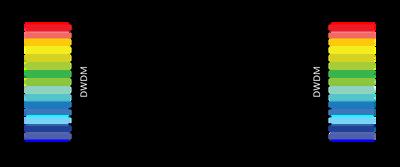
2010s- 2020s:
The technologies are continuing to be developed as we speak Some recent inventions that paved the way for faster and more efficient fiber networks are multi-core fibers and space division multiplexing (SDM)

06
Innovations in Industry 4.0 and IoT Supported By Fiber Optic Networks

In this section, we'll look into the range of innovations in industry 4.0 and IoT that are supported by the developing fiber optic technologies These include:
Mobile Robots and Autonomous Vehicles: These technologies require robust, fast communication for navigation, collision avoidance, and task coordination. Fiber optic networks offer the necessary speed and bandwidth for data transmission in sensors

Predictive Maintenance: This is based on real-time equipment monitoring to predict potential faults and allow for proactive maintenance Such tracking requires processing large amounts of data, which fiber optics can support due to their high bandwidth. Sensors placed on machinery transmit data over fiber optic networks to predictive analytics systems.
Virtual Reality (VR) and Augmented Reality (AR): Fiber optics networks provide low-latency, high-speed connections for realistic and immersive VR experiences Fiber optic networks ensure the operation of highresolution video and audio in VR and AR networks.

Big Data Analytics: The ability to process and analyze massive data sets is fundamental to many Industry 4.0 applications. High-speed fiber optic networks enable the quick transfer of these data sets to the necessary analytics tools. Real-time decision-making industries, such as finance and manufacturing, use such innovations

07
1
2
3
4
5G: Fiber optic networks are integral to the backhaul infrastructure of 5G networks. They transmit data between cellular base stations and the core network. Using fiber optic networks results in high data rates and low latency.

Challenges Facing Fiber Optic Network Industry
Despite the fact that fiber optic technology is developing at a rapid pace, some challenges prevent the technology from outpacing the current patterns of growth Let's have a look into these challenges in more detail:
Increasing Bandwidth Demands Due To Bandwidth Growth

The global bandwidth demand continues to grow across channels. By 2022, the global internet demand was 700 terabits per second (Tb/s) in 2026, up from 150 Tb/s in 2021, representing a 36 percent growth
The traffic growth requires advancements in transmission technologies, and the pressure on fiber optic infrastructure is immense
Challenges Related to the Cost Of Deployment
Getting fiber optic cables to areas where they were not installed before can be expensive, especially in rural areas with a relative lack of infrastructure. The approach to this issue should be multi-faceted, involving government subsidies, shared infrastructure, and new technologies combined with improved installation techniques.

08
5
Security
While fiber optic networks are generally more secure than other types of networks, they are not completely immune to security risks. Eavesdropping, data modification, and denial-of-service attacks can still occur. Eavesdropping refers to the interception of data flowing through the network Data modification can occur if an attacker can breach a network. Passive Optical Networks (PONs), the main architecture currently used in fiber optic networks, is susceptible to standard DOS attacks The solution to this challenge is the development of technologies that are not vulnerable to common types of attacks.

Compatibility and Standardization

With many different fiber optic systems installed worldwide, maintaining standards can be a challenge. There is a need for interoperability standards to ensure that equipment from different vendors can work together seamlessly.
Standards by the International Telecommunication Union (ITU), Institute of Electrical and Electronics Engineers (IEEE), and Internet Engineering Task Force (IETF) can be a solution to this challenge. However, many standards that apply to fiber optic cables are still being developed, and absolute coherence is yet to be reached. The use of open-source hardware and software can help as well, and so is interoperability testing and certification.
09
Innovations and Developments That Address Fiber Optic Networks Challenges
Finally, we arrive at the list of current innovations in fiber optic technology and fiber optic network construction that either already do or have the potential to sustain the growth fiber optics have to go through to support fast-growing industries of IoT and Industry 4 0 adequately
1.Network Access Innovations Fiber to the Home (FTTH) and Fiber to the Premises (FTTP)

Expand the reach of fiber optic networks and enhance the connectivity between service providers and end-users.
These technologies aim to replace traditional copper-based networks that used to be at most residential homes and premises They involve extending fiber optic connectivity directly to places, which leads to more reliable internet access Whether consumers work from home or play video games, they require faster and more robust internet connections. FTTH and FTTP can cater to these needs and enable seamless streaming, online gaming, and activities requiring vast bandwidth.
Radio over Fiber (RoF)

This is a technology where light is modulated with a radio signal and transmitted over an optical fiber link to facilitate wireless access. In other words, it involves using optical fiber links to distribute radio frequency signals. This technology is often used in broadband wireless systems, such as cellular networks, Wi-Fi, and TV broadcasting

10
2. Fiber Design Innovations:
Involve changes to the physical design and structure of the fiber to enhance its performance and expand its capabilities.
Optical Microfibers
Optical microfibers are extremely thin fibers with diameters well below the wavelength of the light transmitted through them. They are typically made of glass or silica and have diameters ranging from 50 to 1000 nanometers.

Optical microfibers result in faster and denser fiber deployment that allows meeting extreme bandwidth requirements Networks made of optical microfiber can be installed faster with less manpower and cheaper costs
Their small size and sensitivity to environmental changes make optical microfibers promising for sensing applications in IoT. They can be used to develop compact sensors for temperature, strain, or chemical detection, expanding the sensing capabilities of IoT networks.
Bend-Insensitive Fibers
Bend-insensitive fibers are designed to tolerate bending without significant loss of signal They achieve this through a unique design in which a specially engineered coating or layer, called the trench, is added to the fiber. This trench reflects any light that strays from the core back into the core, minimizing the amount of light lost when the fiber is bent.
In the context of IoT, bend-insensitive fibers could be particularly beneficial IoT networks often involve large numbers of devices in various locations, and the cabling may need to be routed around corners or through tight spaces Using bend-insensitive fibers could make installation easier and improve network performance.

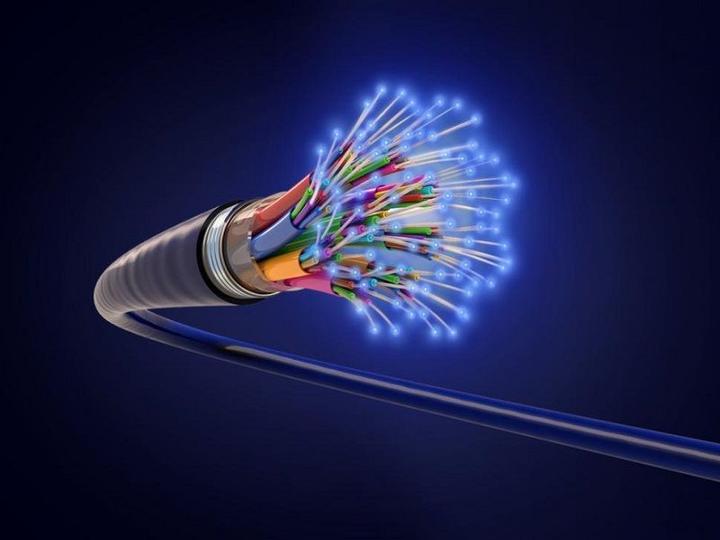
11
Hollow-Core Fibers
Hollow-core fibers, where light travels in an air-filled, hollow core, are an emerging technology alternative to most fiber optic cables that use solid glass cores. They offer the potential for lower latency, less signal loss, and a higher data transfer rate than traditional solid-core fibers The technology is implemented in precision applications requiring high-speed and low-loss transmission, including telecommunications, high-power pulse delivery, and high-precision sensing In the context of IoT, hollow-core fibers can be beneficial for autonomous vehicles or specific industrial IoT systems.
Few-Mode Fibers
Few-mode fibers (FMFs) are multimode fibers that support limited modes. They are designed to maintain the benefits of single-mode fibers while allowing for higher data capacities. This controlled mode multiplicity helps increase data capacities while avoiding issues associated with intermodal interference, a problem in conventional multimode fibers
FMFs can boost data transmission capacity without the problems related to intermodal interference. Higher data capacity can support the increased data traffic of extensive IoT networks
Photonic Crystal Fibers

These are optical fibers that obtain their waveguide properties not from a spatially varying glass structure but from an array of tiny, airfilled holes that run along the entire fiber length. These fibers have unique properties, like the ability to guide light in a hollow core, making them suitable for various applications, including nonlinear optics and quantum technologies

PCFs, especially those with a hollow core, can provide lower latency and signal loss, similar to hollow-core fibers. Their ability to manipulate waveguide dispersion can also be leveraged for various IoT applications.

11
Focus on the devices that generate and detect the light signals carried by fiber optics.

3. Light Source and Detector Innovations: Silicon Photonics
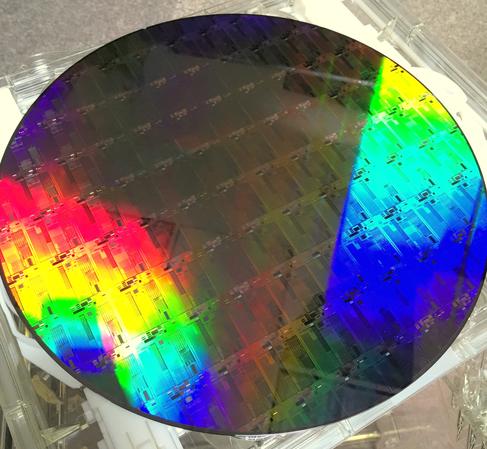
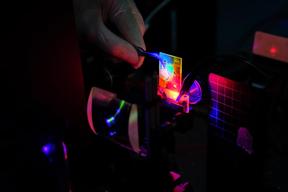
This method involves using both optics and silicon-based electronics. While implementing standard manufacturing methods creates new, high-performative, and affordable devices Silicon photonics can be used in data centers and consumer electronics.
Silicon photonics could be a game-changer for IoT and Industry 4.0. They are capable of providing high-speed communication for transmitting the vast amounts of data generated by IoT devices. Silicon photonics are also helpful for enabling new sensing capabilities and developing edge computing. However, challenges remain, including improving the efficiency of silicon-based light sources and detectors and reducing losses in silicon photonic circuits.
Quantum-Dot Lasers
Quantum-dot lasers use quantum dots nanoscale semiconductor particles as the active gain medium. Quantum-dot lasers can operate at extremely high frequencies, which leads to faster data transmission rates. Moreover, they can provide high-temperature stability and are less sensitive to temperature changes. The high-frequency operation of quantum-dot lasers could allow for faster data transmission rates in fiber optic cables. This, in turn, can help improve IoT networks' overall speed and efficiency.
12
Are designed to maximize the data-carrying capacity of fiber optic networks and improve their efficiency.
4. Network Efficiency and Capacity Innovations: Elastic Optical Network (EON)
n Elastic Optical Network (EON) is a type of fiber optic network that ovides improved flexibility and scalability compared to traditional fixed-grid networks This type of network can adjust the spectrum bandwidth allocation dynamically based on the data traffic requirements.
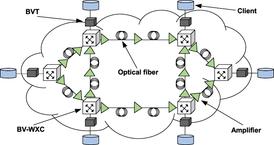
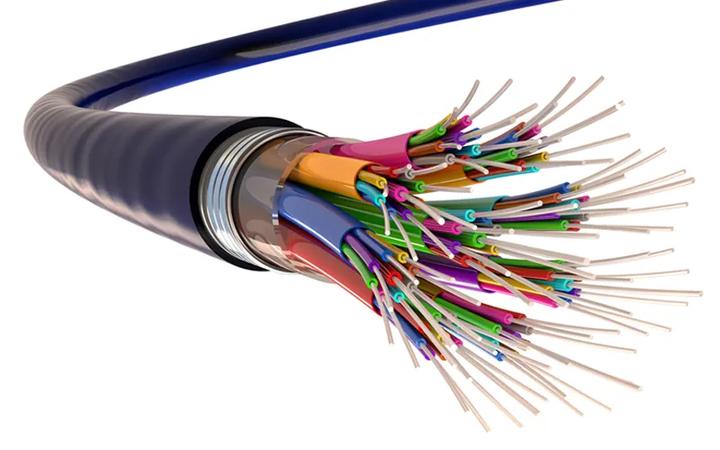
In a conventional fixed-grid optical network, the spectrum is divided into fixed channels with a set bandwidth, and each optical signal is assigned to one of these channels This can lead to inefficient spectrum use if the data traffic doesn't perfectly match the fixed channel bandwidths.
EONs, on the other hand, use advanced modulation formats and digital signal processing techniques to adjust the channel bandwidths dynamically. This means the network can adapt to different traffic demands and allocate spectrum resources more efficiently
EONs are beneficial for IoT as they can dynamically allocate bandwidth. Moreover, EONs can reduce the need for costly spectrum upgrades However, one thing that should be considered is that EONs require more sophisticated control and management systems than other fiber optic networks.
13
Space-Division Multiplexing (SDM) and Wavelength Division Multiplexing (WDM)

WDM increases bandwidth by transmitting multiple data streams on different light wavelengths or colors simultaneously over a single optical fiber In simple terms, this allows out more data on a single fiber.
SDM is a method of transmitting several data channels simultaneously over the same optical fiber Unlike wavelengthdivision multiplexing (WDM), where each track is modulated at a unique frequency, SDM utilizes multiple spatial modes of a multimode fiber.
SDM increases the total transmission capacity of fiber-optic communication As a result, more data can be transmitted simultaneously.
The key difference between the two techniques is that while WDM achieves higher capacity by utilizing different wavelengths within a single fiber, SDM achieves higher capacity by creating multiple transmission paths within a single fiber or cable. Both WDM and SDM can be used individually or in combination to significantly increase the capacity of fiber optic communication systems, accommodating the increasing demand for data transmission capacity due to developments like the Internet of Things (IoT), 5G, and the increasing use of cloud services. However, while WDM is a mature technology widely deployed, SDM is still a developing technology that has yet to see widespread commercial use.
15
5. Monitoring and Sensing Innovations
Are focused on improving sensing and monitoring applications of fiber optic cables
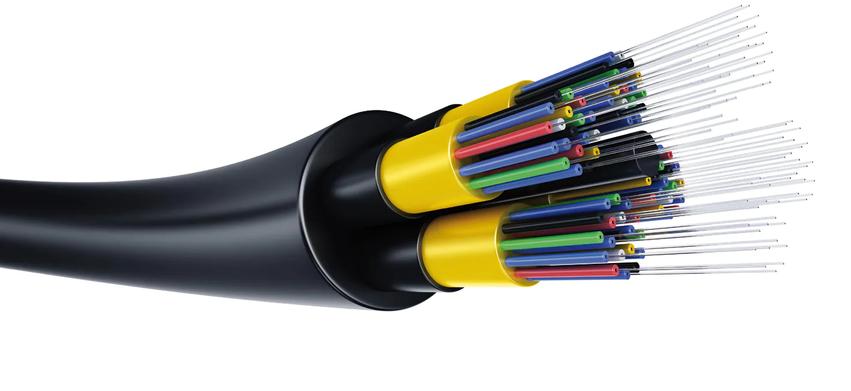
Fiber Bragg Grating (FBG) Sensors
FBGs are distributed Bragg reflectors constructed in a short segment of optical fiber that reflects particular wavelengths of light and transmits all others They are increasingly used in sensing applications, providing solutions for measuring strain, temperature, pressure, and other parameters in environments where traditional sensors may fail
The sensing capability of FBGs could be used in a myriad of IoT applications, from infrastructure health monitoring (bridges, buildings) to environmental sensing These sensors can work in harsh environments where electronic sensors fail, expanding the range of possible IoT applications.
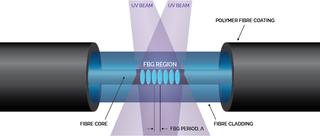
15
Conclusion
To conclude, while demand for the Internet connections and fiber optic infrastructure is currently growing at a pace that exceeds the growth of the fiber optic market, promising technologies in the area are catching up with the demand The innovations touch every aspect of fiber optic technology, including network access, fiber design, network efficiency, light sources, and testing/monitoring.

References
Berk-Terk (A Nexans Company) (n d ) Bend Insensitive Multimode Fiber: A new twist for high bandwidth fibers. Anixter. https://www.anixter.com/content/dam/Suppliers/Berktek/Whitepapers/WP BendInsensitiveMultimodeFiber 041312 fin.pdf
Fortune Business Insights (2023, April) Internet of things [IOT] market size, share & growth by 2030 Fortune Business Insights https://www fortunebusinessinsights com/industryreports/internet-of-things-iot-market-100307
GovTech. (2021, April 23). Could fiber be the final frontier of high-speed internet?. GovTech.https://www.govtech.com/network/could-fiber-be-the-final-frontier-of-high-speedinternet html
Grand View Research (2023) Fiber Optics Market Size & Growth Analysis [2023 report] Fiber Optics Market Size & Growth Analysis [2023 Report]
https://www.grandviewresearch.com/industry-analysis/fiber-optics-market
Islam, S., Khan, M. F., Hossan, M. Z., & Amin, M. A. (2019). An Overview of Radio over Fiber (RoF) Technology In 2019 2nd International Conference on Intelligent Computing, Instrumentation and Control Technologies (ICICICT) (pp 749-752) Kannur, India
https://doi org/10 1109/ICICICT46008 2019 8993233
Kitayama, K. I., & Diamantopoulos, N. P. (2017). Few-mode optical fibers: Original motivation and recent progress. IEEE Communications Magazine, 55(8), 163-169. Markets and Markets (2021) Temperature Sensor Market Markets and Markets
https://www marketsandmarkets com/PressReleases/temperature-sensor asp
Paschotta, Dr R (2023, July 24) Hollow-core fibers Hollow-core fibers, explained by RP; photonic bandgap fibers, air-guiding fibers. https://www.rpphotonics.com/hollow core fibers.html
Paschotta, Dr R (2023b, July 24) Photonic Crystal fibers Photonic crystal fibers, explained by RP; PCF, holey fiber, hole-assisted, microstructure fiber, photonic bandgap, mode area, chromatic dispersion, applications https://www rp-photonics com/photonic crystal fibers html
Paz, E., & Saavedra, G. (2020). Maximum transmission reach for optical signals in elastic optical networks employing band division multiplexing. arXiv preprint arXiv:2011.03671.
Puttnam, B J , Rademacher, G , & Luís, R S (2021) Space-division multiplexing for optical fiber communications Optica, 8(8), 1186-1203
Weissberger, A (2021, March 8) PON’s Vulnerability to Denial of Service (DoS) Attacks Technology blog. https://techblog.comsoc.org/2021/03/08/pons-vulnerability-to-denial-ofservice-dos-attacks/
Werneck, M M , Allil, R C S B , Ribeiro, B A , & Nazaré, F V B de (2013, May 15) A guide to Fiber Bragg grating sensors IntechOpen https://www intechopen com/chapters/44684
Wu, X & Tong, L (2013) Optical microfibers and nanofibers Nanophotonics, 2(5-6), 407-428 https://doi.org/10.1515/nanoph-2013-0033
Yao, Z , Jiang, C , Wang, X , Chen, H , Wang, H , Qin, L , & Zhang, Z (2022) Recent Developments of Quantum Dot Materials for High Speed and Ultrafast Lasers Nanomaterials, 12(7), 1058.
17
1 2 3. 4 5. 6. 7 8 9 10. 11 12 13 14 15















































